


Popular digestifs are fortified wines (sweet sherry, port), brandies (cognac, grappa), bitter liqueurs (Chartreuse, Sambuca), or other distilled liquors (ouzo, limoncello).
Let's finish off with some recommendations by Mike Baquette from the Urban Grape:
H/T: TasteFrance

Appetizers to Desserts: a FULL Thanksgiving Dinner Menu
A full menu for Thanksgiving dinner, including a drink recipe and popeyes biscuits recipe.
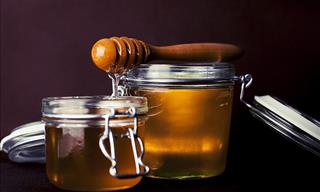
Take a Look at These Food Products That Last Really Long
There are a number of food products that have a long shelf life. Here is a list of some foods and drinks that last a remarkably long time.

Can Alcohol Affect the COVID-19 Vaccine?
Some health experts are concerned that drinking alcohol around the time of a Covid-19 vaccination could potentially render the jab less effective...
 3:32
3:32
Is Expensive Wine Really Better Than The Cheaper Variety?
Does price have to do anything with how tasty a bottle of wine really is? Find out in this video, we were surprised to hear the answer.

This 10-Minute Read Will Make You a Bourbon Expert
Are you unsure of the difference between whiskey, bourbon, and scotch? We are here to clarify.

Study Finds Nicotine and Alcohol, Not Coffee, Harm Sleep
New study finds that alcohol and nicotine have a detrimental effect on sleep quality compared with caffeine.
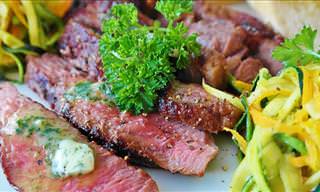
The Perfectly Seared Steak: All You Need to Know
Now that its winter, our steak cooking options are fairly limited to the stove and oven, but this isn’t a bad thing...
 3:28
3:28
This Slow Cooker Macaroni and Cheese is Simply Delicious
Home-made macaroni and cheese is much tastier than that which you can buy in a store. By using a slow cooker, you can make the tastiest macaroni and cheese ever.

Why Did No One Tell Me That Beer Is So Amazing?
Did you know any of this stunning beer trivia? Frankly, I had no idea that beer was this amazing.

Make a Delicious and Unexpected Dessert: Apple Blossoms!
It's time to impress your guests with a dessert that isn't just sweet and delicious, but also stunning to look at!
 13:18
13:18
A Formula For Whipping Up Healthy 20-Minutes Meals
This video offers a delightfully simple solution for busy people - a go-to formula for healthy 20-minute meals.

13 Delicious Dishes You Can Make Using a Waffle Iron
I didn't think I could find so many ways to use a waffle iron to create delicious meals.

A Fool-Proof Chili Recipe for Winter Nights!
Here's a classic and delicious chili recipe that can be made in just about an hour!
 3:57
3:57
I Could Eat This Yummy No-Oven Cake Every Day!
When a sweet tooth strikes, this is the dessert to make! No oven is needed.
 8:18
8:18
Ancient Recipe Corner: Old Timey Festive Buttered Beer
Whip out your pewter pots for this medieval recipe! We'll be making buttered beer, with a non-alcoholic version included.

These Delicious Baked Dishes Have Become Family Favorites
These three, heavenly baked dishes have become family favorites in my kitchen. I encourage you to try them out!

You've Got to Try these Delicious and Comforting Winter Salads
These hearty, comforting salads will take your mind off classic winter, comfort food.

Boost Your Immune Health With This Ayurvedic Drink
Check out this wonderful traditional Ayurvedic drink called kadha that is known to boost immunity and fight the cold.
 4:58
4:58
The Long History of the World’s Oldest Hot Beverage
While tea was invented in China, it has spread to all corners of the world, becoming a staple everywhere it was introduced.
 4:52
4:52
Who Knew Salad Dressings Could Be So Healthy?
Who knew salad dressings could be so healthy and easy to make?

15 Peculiar Food Combinations That People Actually Love
Take a look at these weird food combinations that sound gross but are actually quite delicious.

Enjoy Guilt-Free, Delicious Brownies With This Great Recipe
This is a sweet brownie treat you'll definitely want to try - delicious, guilt-free four-ingredient brownies! Read the recipe here.
 1:39
1:39
An Innovative Twist Using Eggs for a Healthy Breakfast Idea
Eggs are one of my favorite food. They are so versatile and can be used in a number of ways. Check out this innovative recipe.

6 Delicious and Special Soup Recipes That’ll Warm Your Body
The cold winter days that stimulate the senses are perfect for trying these 6 simple, delicious, soul-warming soup recipes.

We Bet You've Never Tasted Potatoes As Delicious As These
These are the best potatoes you have ever tasted!

Upgrade Your Favorite Foods With this Common Ingredient!
How to use baking soda and drinking soda to upgrade different foods.
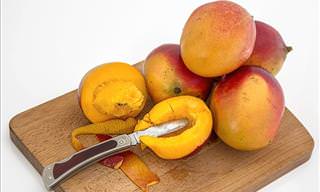 0:48
0:48
There is a Secret Way to Perfectly Cut a Mango...
Enjoying this tasty summer fruit has never been easier!

6 Terrific Recipes That Can Be Made with Medicinal Herbs
Find out how mallow, nettles, mint, elderberry, fennel, and chives are dutifully incorporated into these 6 delicious recipes!

An Italian's Secret to Making the Best Pasta
Follow these tips to prepare an excellent plate of pasta.
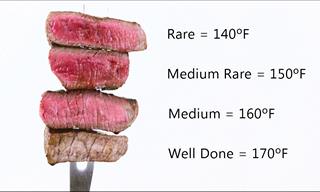 1:31
1:31
Easy Trick to Know If Your Steak Is Rare or Well-Done
Judging how well done a steak is just by looking at it can be hard, thankfully, this easy trick will tell you just how done it is.

6 Mistakes We Make When Making Scrambled Eggs
If you want to make the perfect scrambled egg, follow these 6 simple tips.

9 Ice Cream Recipes You Can Make with a Food Processor
9 easy, healthier ice cream recipes that you can prepare in a food processor.

Cook a Traditional Czech Meal With These 5 Recipes
To enjoy the unique tastes of Czech cuisine, you no longer need to fly abroad. The following recipes will allow you to cook a traditional Czech meal yourself.

You Won't Believe What This Healthy Bread is Made of...
Wow, have you tried these new veggie flatbread recipes?! They are healthy, tasty, gorgeous and easy. Those are a few of my favorite things.

4 Heavenly Chicken Soups to Spoil Yourself with This Winter
Chicken is a common soup ingredient because of its ideal tenderness and taste. Presenting 4 of the many irresistible ways to make the chicken soup of your dreams.

Learn How to Roast Peanuts in a Microwave 3 Simple Ways
Find out how to to microwave roasted peanuts and how to make them taste better with some yummy seasoning options.

11 Unexpected Health Benefits of Drinking Whisky
If you thought whisky was nothing more than an alcoholic drink, you were mistaken. This video will detail the various health benefits you can reap by drinking whisky in moderation.

3 DASH Diet Soups for a Cozy Winter Day
3 recipes for dash diet approved sou[s that will warm up your winter

18 Common Baking Mistakes and How to Avoid Them
If you like fresh pastry, but your baking attempts have been less than successful, there's a good chance you're "guilty" of these 18 common baking mistakes.
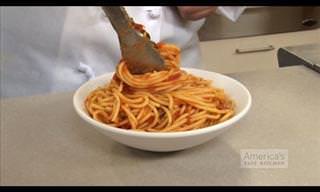 2:21
2:21
Apparently I've Been Cooking Pasta All Wrong!
I thought I knew how to cook pasta, but apparently I've been doing it wrong!

Make 10 Scrumptious Dishes Using Only 3 Ingredients!
When I watch a cooking show on TV or grab a recipe book, they all look delicious, but each one requires so many ingredients – some of which I can’t even find. Using only 3 ingredients, these recipes will allow you to quickly make mouth watering dishe
 1:21
1:21
Surprise Everyone By Serving Them a Cake Inside an Egg!
No one will see this coming, these eggs contain little cakes...

This Has to Be the Most Guilt-Free Bread Recipe Ever!
This cloud bread is carb, gluten and sugar-free. Despite those facts, it's still light, fluffy and utterly mouthwatering. Learn how to bake it today.

10 Piping Hot Soups to Keep You Warm Throughout Winter
These soups are amazingly tasty, and will keep you warm on a cold winter's day. Yet the most amazing thing is that they are all under 300 calories.

Guide: The Right Seasoning Can Do Wonders!
A steak is easy to make. A well seasoned one, though, can make all the difference.

This Delicious Bread Has No Carbs, No Gluten and No Sugar
Known as cloud bread, this carb and gluten free bread is soft, airy and fluffy, and so delicious, it practically melts in your mouth. All you need are three ingredients to make it - let's take a look.
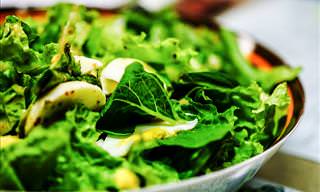
Here's How to Make the Tastiest Salad Dressing!
These charts briefly explain how best to go about making a variety of delicious salad dressings.


